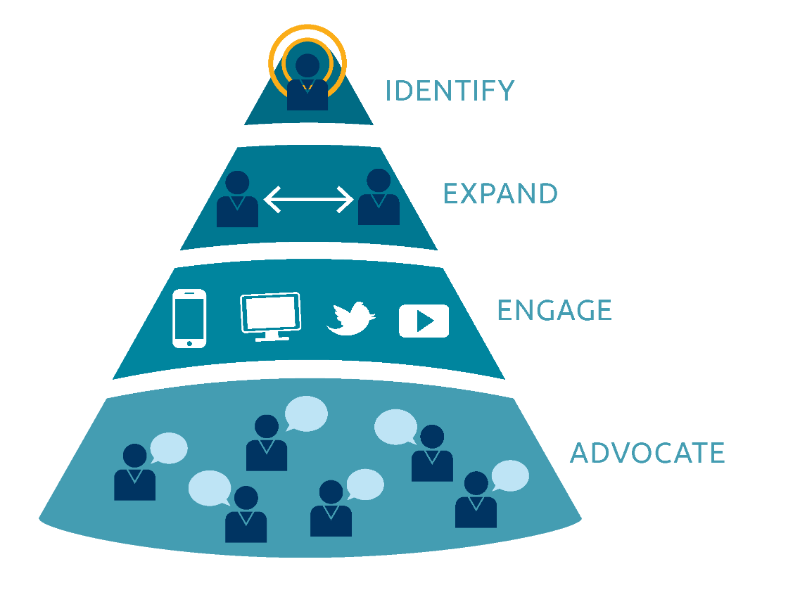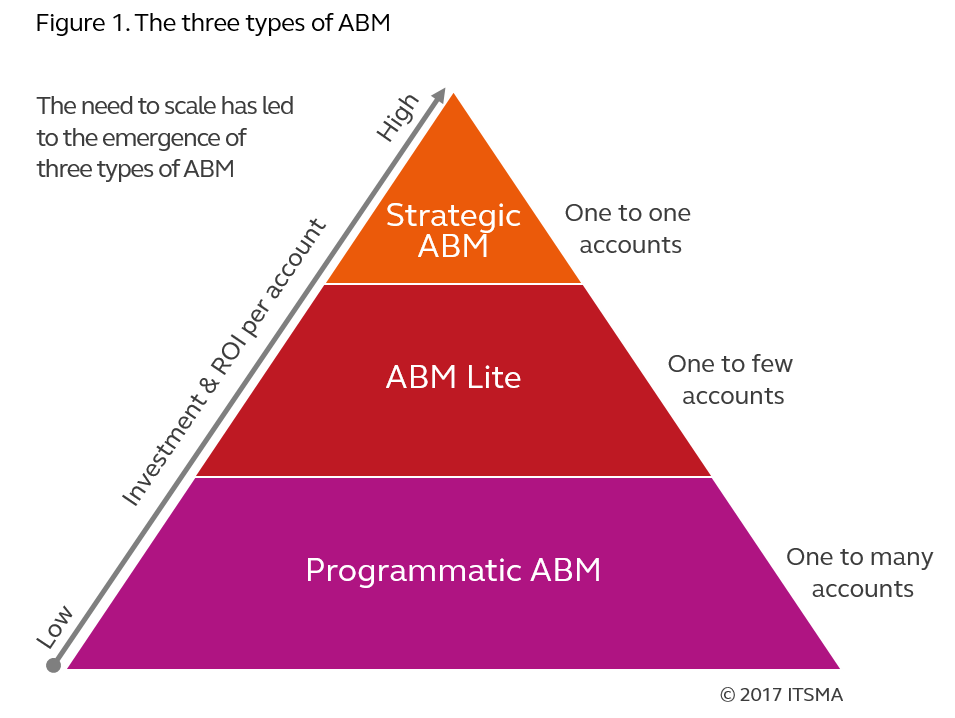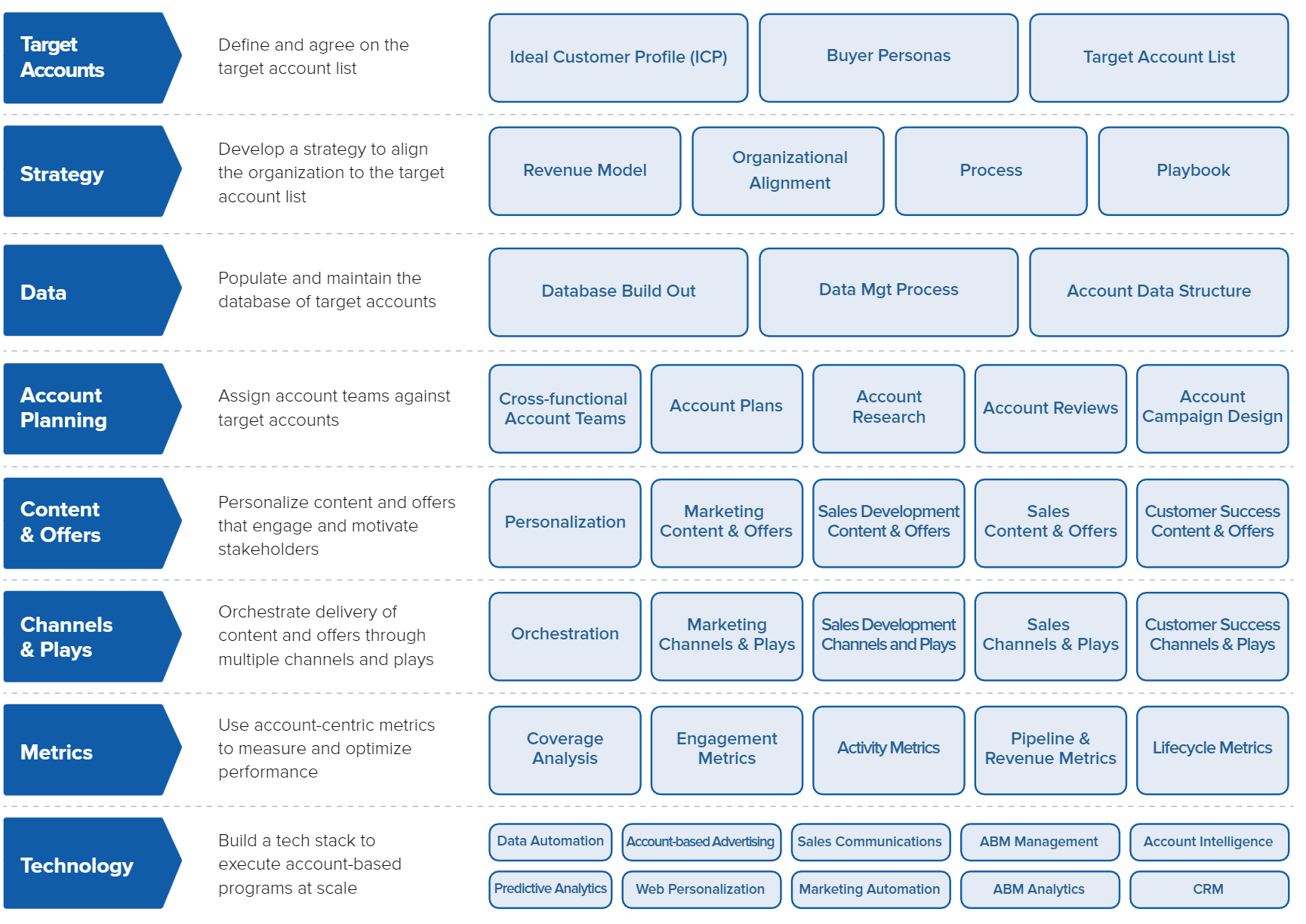What Makes Account-Based Marketing a Preferred Approach for B2B Companies?
Marketing to wineries is challenging at the best of times. In Napa Valley alone, 170 new wineries have been registered each year since 2015. Compared to the ‘90s, when only seven new wineries were registered every year, there’s plenty of opportunities to market your supplies to potential clients.
Wine suppliers are not only competing against each other, but consumption patterns are changing as well. Large brands are expanding white-label offerings to push down prices, so you have to offer cost-efficient solutions for your clients that still drive profit for your business.
A growing number of B2B marketers deploy account-based marketing (ABM) strategies as part of their marketing plan. It’s a perfect complement to short-term lead generation. It focuses all your sales and marketing efforts around best-fit, high-value accounts, so you can concentrate on delighting your trade customers and driving long-term growth.
So what are the benefits of using ABM, and how can you make it work for you?
What is B2B Account-Based Marketing?
Business-to-Business (B2B) account-based marketing (ABM) is a growth strategy that focuses sales and marketing resources on a small group of high-value accounts. With ABM, you treat every account as an individual market with unique goals, budgets, needs, and challenges. You’ll target each account with tailored communications, content, and campaigns.
This approach allows your business to filter out unprofitable or low-value accounts. Your sales and marketing teams align with each other while fully engaging with your key trade accounts. This way, you see more significant and faster returns.
Account-based marketing goes beyond lead generation. It builds long-term relationships with your key accounts to maximize cross and upselling opportunities.
Source: The Digital Transformation People
ITSMA, which pioneered account-based marketing in the early 2000s, defines three types of ABM:
Strategic ABM
Strategic ABM is reserved for your highly strategic trade accounts. It focuses on a one-to-one relationship with one to four key accounts. A dedicated marketing account manager works with the sales team on crafting customized marketing plans for each account.
Key stakeholders within the target accounts are consulted, often in joint initiatives. Strategic ABM requires thought leadership and creative relationship building. Marketing technology helps to craft communications and track progress.
Strategic ABM is much more than marketing—it’s a corporate initiative that increases revenue and creates long-term customer value.
ABM Lite
ABM Lite is one step removed from Strategic ABM. It focuses on one-to-few relationships with five to ten second-tier accounts at a time, and accounts are grouped based on similar challenges, attributes, or initiatives.
As with all ABM, collaboration with sales is vital. However, these collaborations focus on decisions such as which accounts to target or what to promote.
Personalization is “lite,” and technology plays a role in automating campaign execution and tracking. ABM Lite tracks revenue and pipeline growth.
An ABM Lite campaign is a plausible launchpad for your business’s ABM campaigns as you transition to a more strategic, customized approach.
Source: ITSMA (Figure 1 pg. 4)
Programmatic ABM
Programmatic ABM uses marketing technology to target tens or hundreds of accounts at a time. The role of technology is more critical in Programmatic ABM than in the other forms of ABM.
This one-to-many approach is less resource-intensive and provides coverage far beyond Strategic or Lite ABM. It reflects the outbound approach of sales and targets specific segments or named accounts.
As with ABM Lite, revenue and pipeline growth are tracked, as well as total revenue generated.
Benefits of Account-Based Marketing for Wine & Craft Suppliers
For suppliers selling to large accounts, it makes sense to focus their efforts on premium trade accounts.
But even at smaller volumes, B2B account-based marketing has many benefits. ITSMA reports that 84% of businesses see a higher ROI with ABM than their other marketing forms.
B2B sales teams already use an account-based approach. With the involvement of marketing, sales teams can personalize their relationships with key accounts. They can deliver specific, targeted messages to the right decision-makers at the right time, increasing their value in the eyes of their customers.
ABM revolutionizes marketing to no longer deliver leads with a scattered approach but becomes a trusted partner with sales. ABM provides the sales team with insights into the needs and desires of the target audience, and customers benefit from a seamless experience with a coordinated sales and marketing approach.
Sales and Marketing Alignment
Effective collaboration between sales and marketing is the cornerstone of a successful ABM campaign. This cannot be overstated. Everyone works toward the same objectives and understands each other’s roles and responsibilities.
The integrated teams identify key trade accounts, craft customized messages, and work together to move customers through their buyer journey.
This ensures all communications and content are consistent for every major account. Team members can pick up with an account where their colleagues left off and provide a streamlined experience for clients.
The strategy of winning new business (or expanding current business) is supported by smaller objectives, such as:
- Identifying decision-makers in key accounts
- Creating content for these decision-makers
- Generating leads
- Securing appointments
- Closing deals
- Post-sales follow-up to nurture loyalty
- Up-selling and cross-selling
Shorter Sales Cycle
A perk of sales and marketing alignment is a shorter sales cycle. The buyer journey typically involves multiple decision-makers. A coordinated team simultaneously nurtures leads so they can reach a decision faster.
Additionally, ABM focuses on a narrow set of ideal accounts for your brand, so you reach your target audience quicker, helping them to a faster decision.
Consistent Customer Experiences
B2B account-based marketing is a long-term B2B marketing strategy that spans several months or years, so you must remain consistent in your engagements with your key accounts. Because ABM encourages sales and marketing alignment, it naturally promotes consistent customer experiences.
ABM encourages a deeper understanding of key accounts. Content and messaging are personalized, improving the customer experience and generating long-term brand loyalty.
Increased Relevance with Key On-Trade/Off-Trade Accounts
Increased relevance with your key accounts is a natural effect of an improved customer experience.
As we’ve seen, ABM makes significant efforts to personalize your engagements. When you direct relevant content and messaging to key stakeholders in these accounts, they see you as the ideal solution to their problems.
Increased ROI
As you focus your resources on critical high-value accounts, you save time and money. You can focus on the stages of the buying journey that have the most impact on the bottom line.
Focusing on a narrow set of deals increases your likelihood of closing them, and you can use customer journey analytics to measure your return on investment. This also helps you pinpoint the stages of the buyer journey where you can maximize ROI.
Expand Your Existing On-Trade/Off-Trade Business
Account-based marketing encourages you to invest significant resources in understanding the goals and motivations of a few major accounts.
The net result is satisfied and engaged customers who are eager to spread the word and do extra marketing on your behalf. Statistics show that an increase of 5% in customer retention equals an increase in profits of up to 95%.
Investing the time to build relationships with your crucial trade accounts has two benefits:
- You're in the perfect position to spot new opportunities to sell within existing accounts
- You build a loyal fan base of brand advocates who are eager to spread the word
How to Implement Account-Based Marketing in Your Brand Strategy
1. Write Your Account-Based Marketing Plan
Account-based marketing is a strategic initiative for your business, so it's good practice to write out your account-based marketing plan.
Clarify the roles and responsibilities of your sales and marketing teams, then outline your marketing strategy with your targeted channels and your specific messaging.
Your account-based marketing plan should include content that:
- Builds your Unique Selling Proposition (USP) – One of the easiest ways to convince other businesses to buy from you is by showing off what it is that sets you apart from your competitors. Are your wine bottles made from recycled glass? Are you veteran-owned or woman-owned? Do you donate a portion of your profits to charity?
- Describes key initiatives - Describe current or previous initiatives in your trade accounts. What major problems have you solved for previous clients? Have you cross-promoted with local businesses? Highlight your successes and what you'd like to do more of, and potentially highlight your failures and how you’ve learned from them.
- Highlights key accounts - Think of your key on-trade customers and off-trade customers and provide examples of your partnerships with each.
- Lists your range of products or services – Demonstrate the line of products or services you offer and detail your revenues from each.
- Performs competitor analysis - Your most successful competitors are your best teachers because whatever they've done has worked well. You don't need to reinvent the wheel. Glean as much information as you can from their website, social media, offline activities, and other marketing.
- Outlines your sales funnels - Outline the key steps your customers go through when buying from you. Highlight your customer touchpoints and points of sale to help you spot new opportunities. Eliminate any unnecessary steps to streamline the process for customers.
- Outlines new opportunities - Think of new accounts you'd like to reach and model your approach to what's worked well in the past. Your most successful accounts should be your ideal customer profile. Assess the risks associated with entering new markets or onboarding new business, and strategize ways to jump over any hurdles.
- Outlines your channels - Outline the channels you use or plan to use to market your wines. Are you using email, social media, SEO, or a combination of all of them?
Start with a template to kick off your brainstorming. You'll also find examples of account-based marketing plans for wine and craft suppliers, or you can reach out to our team for an ABM strategy tailored to your brand.
2. Secure Executive Sponsorship
As we’ve stated, account-based marketing should be seen as a corporate initiative. This means getting all of your employees involved with your ABM strategy. This ensures resources are available and generates consistent experiences for your target accounts.
Your VP of Sales and VP of Marketing should collaborate on and distribute information about:
- Your winery's USP
- Team members directly responsible for each task
- Budget and resources available
- Goals and KPIs
3. Build Your ABM Team
Once you've secured the involvement of everyone in the business, identify the sales and marketing team members who’ll be responsible for executing your ABM campaign.
You should dedicate a minimum of one sales team member and one marketing team member to your ABM accounts. They'll be responsible for creating and publishing content, following up on leads, and closing deals.
4. Identify Your Target Accounts
Use your most successful accounts to build a profile of your ideal customer. These are usually your long-term customers who are the most profitable and pleasurable to work with. Likewise, they like working with you, recommend your products and services to their network, and see you as a valued partner.
Additionally, look at your accounts that are showing enthusiasm for increasing their business with you. You can also investigate accounts that meet your strategic criteria, such as accounts with a pressing need and budget.
As you identify your target accounts, you should:
- Filter and tag leads in your CRM using criteria such as revenue, number of employees, years in business, etc.
- Look at your best deal in the last 12 months and figure out what made that customer ideal
- Pick accounts based on location or industry
- Review your analytics and identify accounts engaging with your content and which accounts aren’t engaging with your content
5. Create Your Account Engagement Plans
We've emphasized throughout this guide that a salesperson and a must work together to meet your winery's ABM objectives. They’ll collaborate on:
- The key decision-makers they need to reach in your target account
- The content they'll need to attract and engage them
- The channels they'll use to share content and engage with prospects
- The roles each will have at every stage of the customer journey
- How they'll articulate your brand’s USP
- How they'll allocate resources
Sales and marketing work in tandem to help drive consensus among key stakeholders in your target accounts. It's their role to connect their needs and challenges to the benefits your products or services can bring them. This can be as simple as being in the right place at the right time.
6. Attract High-Quality Accounts
Create targeted campaigns
Work out the best channels to reach your target audience. For your trade accounts, these are the channels they use the most to research trends and solutions.
There is no one-size-fits-all approach, so it’s essential to tailor your messages to fit the channel and audience.
Position your brand as a thought leader. To do this, identify your target audience's interests, needs, and challenges, and then tailor your content to address these challenges.
Research the state of affairs using forums, social media groups, reviews, and other industry sources. Develop a well-informed point of view, and don't be afraid to take a stance. This frames your brand as a trusted advisor and partner who's not afraid to lead the way.
Frame your brand as the solution to your audience's problems—leverage testimonials from satisfied customers to prove your effectiveness.
Do this diligently, and you'll attract the attention of the right people.
To actively engage with stakeholders in your target accounts, you should be:
- Sharing content such as blogs, newsletters, videos, and podcasts across your channels
- Creating specific ad campaigns with pay-per-click ads, display ads, and more
- Engaging on social media through the platforms used by your ideal customer; for example, LinkedIn is perfect for business-to-business outreach
- Producing podcasts or videos featuring stakeholders from major accounts
- Sponsoring booths at trade shows
- Sponsoring competitions and awards
- Asking for referrals
- Cold calling
Forge Long-Term Relationships
Once you've attracted the right accounts, it's time to engage them and forge long-lasting relationships. A team member may reach out, for example, to someone who went to the same college.
Ways to engage customers and form lasting relationships include:
- Being professional and courteous
- Respecting schedules and limitations
- Sharing helpful content, not just content your brand produces
- Buying lunch or hosting events
Think about engaging your customers as if you’re building long-term friendships. You want your ideal customers to see you as trusted friends and advisors, not just another supplier.
7. Analyze your results
Account-based marketing is a long-term strategy that takes years in many cases, so you'll need to monitor your results. This allows you to identify gaps in your plan so you can adjust your course as required.
ABM success goes beyond lead generation because it's about progressing accounts, not individuals.
Monitor multiple variables such as:
- Deals won and lost
- Opportunities created
- New contacts
- Time taken to close deals
- Net revenue
Give your ABM campaign enough time to generate results. Be mindful of your customers' buying cycles, and don’t abandon your new strategy before giving it adequate time to work.
Source: Gartner
Conclusion
B2B account-based marketing is a tried and true strategy that’s delivered high returns. If you service large trade accounts, it works well, but it works equally well for smaller accounts.
There are several ways of approaching account-based marketing, from the highly strategic to the highly tactical. In all cases, ABM benefits your business in multiple ways. It encourages your sales and marketing teams to collaborate and focus on common goals. Every employee and stakeholder in your winery works together to create long-term customer value.
If you need help getting started with your ABM strategy, we’re here to help. Barrels Ahead is a wine and craft marketing company that takes organic growth to the next levels. We generate measurable bottom-line results for businesses throughout the wine and craft supply chain.
To find out how you can get Barrels Ahead of the competition through account-based marketing, reach out to us today.



